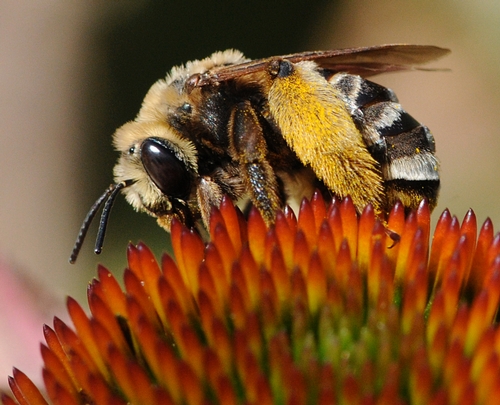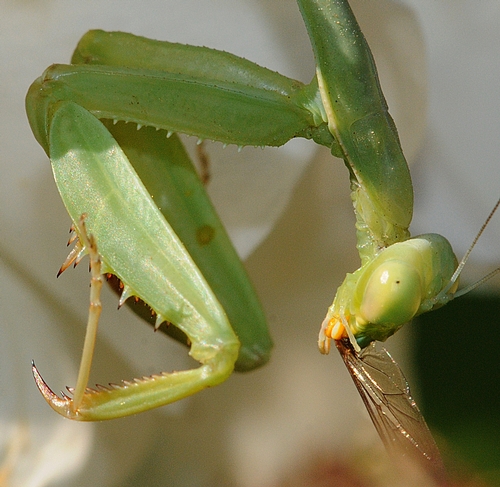Glory bee.
There are more than just honey bees in the Häagen-Dazs Honey Bee Haven.
Think butterflies, dragonflies, sweat bees, metallic sweat bees, carpenter bees, hover flies, tachinid flies, wasps, praying mantids and what not. Such diversity in insects and plants! And to think that two years ago, this was an open field covered with bindweed.
Tomorrow (Saturday) is the grand opening of the honey bee haven, which is a half-acre bee friendly garden planted last fall next to the Harry H. Laidlaw Jr. Honey Bee Research Facility on Bee Biology Road, UC Davis.
The celebration, set from 10 a.m. to 2 p.m., will include speakers, garden tours, children's arts and crafts, and scores of other activities.
The question we're asked the most is: How do we get there?
From the Sacramento Area: Take Interstate 80 westbound to Highway 113 north. At the eastern edge of Davis, take Highway 113 northbound (toward Woodland); exit at Hutchison Drive. Turn left to go west (away from the central UC Davis campus), toward the campus airport; turn left onto Hopkins Road and then left on Bee Biology Road.
From the San Francisco Bay Area: Take Interstate 80 eastbound to Highway 113 north. At the eastern edge of Davis, take Highway 113 northbound (toward Woodland); exit at Hutchison Drive. Turn left to go west (away from the central UC Davis campus), toward the campus airport; turn left onto Hopkins Road and then left on Bee Biology Road.
You can also access the campus map; select "Harry H. Laidlaw Jr. Honey Bee Research Facility" from the pulldown menu. The site is about a mile from the Hutchinson exit.
The second most commonly asked question: Is the garden open year-around? Yes, it is. Come visit. Bring your camera, a pen and a notepad. You'll want to take photos of the beautiful art work (gigantic bee sculpture and beehive columns) permanently displayed in the haven. The plants are labeled so you can decide what you want to plant in your own yard to attract pollinators.
Oh, and there's no charge.
No charge for the bees, butterflies, dragonflies, sweat bees, metallic sweat bees, carpenter bees, hover flies, tachinid flies, wasps and praying mantids, either!
Well, maybe we ought to charge the praying mantids!
Attached Images:

Bee on a coneflower

Carpenter Bee

Tachinid Fly

Chomp, Chomp